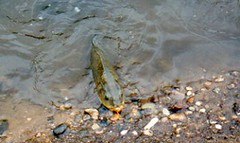From Leech, Eleanor Winsor. "Personal and Communal Memory in the Reading of Horace's Odes, Books 1-3."
Arethusa 31.1 (1998) 43-74.
http://muse.jhu.edu/journals/arethusa/v031/31.1leach.html#REF9"A few preliminary remarks brought together from recent theoretical writings about social memory are in order. Memory, however commonly conceived as a property of individual minds, has an inherently social aspect related to the circumstances and conduct of day-to-day life (Mitchell and Edmunds 1990.1-11). People acquire memories as members of society; memories of recent events seem to us fresh and coherent when we remain in the everyday presence of other persons involved in them. The passive retention of events in memory can be transferred into active recall by the stimulus of communal discourse. As the originator of the scholarly concept of collective memory, Maurice Halbwachs, observed, "the greatest number of personal memories come back to us when other persons recall them to us" (Halbwachs 1992.38). Similarly, communities or groups can influence the restructuring of memories. Remembering is a process of construction, not a retrieval of stored information, but the putting together of a claim about past states of affairs by means of a framework of shared cultural understanding (Radley 1990.46-47). Present experience shapes our interpretive construction of past events (Mitchell and Edmunds 1990.8). Thus individual memory operates within a variety of communal or institutional frames which determine its concerns in relation to their specific values and priorities. In addition to political communities, there are frameworks of family, of religion, of social class or tradition, and these contexts may determine not only what is remembered but also what is forgotten (Fentress and Wickham 1992.36). [End Page 47]
"In its processes of subjective transformation, memory weakens the boundaries between self and the public world. Although events which are independent of oneself often appear memorable as narrative histories possessing their own causal-thematic structure, these may also be assimilated as episodes into the subjective chronology of an individual life story (Rubin 1986.138, Fentress and Wickham 1992.20-21). When did you hear about Caesar's assassination? The memory of an historically significant event may blend facts about the public circumstances wherein the event occurred and facts about the personal matrix in which the information was acquired (Rubin 1986.137). Both artefacts and places operate within the network of recollection. While public commemorations recommend historical events to individual perception, persons may also remember their engagement with material objects (Radley 1990.47). Likewise, local geography and familiar environments provide structures for remembrance moving outward from family to community (Fentress and Wickham 1992.113).
"Upon this principle of visual and conceptual interassociation, Roman rhetorical writers based their "Art of Memory," a system intended to assist an orator in retaining the unified structure of his planned speech. This system taught the practitioner to construct an associative syntax by assigning idea value to "images" mentally distributed against visual back-grounds within an imagined framework of space. "An aedes, an intercolumniation, a corner, an arch" provided markers that could call the high points of an argument seriatim to mind. [footnote 9] The principle upon which the speaker is to select and arrange these pictorial backgrounds called loci is one of routine familiarity that will facilitate ready recall. Buildings, columns, and arches are stable products of culture appropriated through projection for the purpose of cultural reformulation. From this interaction of point and idea it is a natural move to the larger sense in which images function as generators of cultural memory (Küchler and Melion 1991.1-6). [End Page 48]
"The interassociation of spatial and temporal organization observed in the processes of social memory can be seen as a cultural and psychological analogy to the diverse interfaces of space and time that Bakhtin, in
The Dialogic Imagination, proposes as strategies that various literary genres have developed in order to achieve their characteristic semblances of reality, making time "artistically visible" and space "responsive to the movements of time, plot and history" (Bakhtin 1981.84-85, 136-37, 206-08). As treated in discussion of ancient genres oriented towards the evolution of the novel, such fusions of time and space are, of course, narrative constructions, but their development proceeds alongside that within non-narrative genres in the matter of locating and defining the sense of an individual life. Social and civic space are the framework within which Bakhtin's account of the evolution of autobiographical and biographical representation unfolds (Bakhtin 1981.108-10, 130-46).
"Within this context, we may regard the assimilation of social memory into Horace's lyric discourse as mediating the integration of what Bakhtin calls the separate temporal sequences of individual life and historical events (Bakhtin 1981.216-17). The interassociation of place and historical event in Horace's boundary poems defines the visible Roman world as the context. Horace represents contemporary Augustan Rome in two ways: through its position as the geographical center of empire and through topographical allusion. Such representations belong to what Bakhtin calls the "real-life chronotope of the public square, the area where in ancient times the autobiographical and biographical self-consciousnesses were first laid bare and formed." 10 Within this "public square" of rhetorical autobiography, Horace undertakes that renegotiation of social bonding between speaker and audience that is his basis for the transformation of lyric. 11 In the concluding lines of Ode 1.1, the poet advances this self-defined [End Page 49] challenge as an appeal to the judgement of his dedicatee as audience (1.1.34-35: quod si me lyricis vatibus inseres, sublimi feriam sidera vertice). By the future tense of the verbs, he implies a deferred judgement. He has not yet appropriated the title of "lyric poet," but only made application for it to be granted by the receiver of his poems. Nor indeed, has he yet told us what the title signifies, but only remarked on the need for "segregating" (32) himself from the populace as symbolically represented by the social panorama that fills out the greater part of the poem. To achieve the identity of lyric poet demands something more than refining aesthetic skills; it requires the poet in dialogue with tradition to appropriate the position which Bruno Gentili calls one of leadership "in integrating the individual into his social context" (Gentili 1988.55). For such a position, Horace's Roman world supplied no previous model" (47-50).
9. Rhetorica ad Herennium 3.16.29-20.32. Later, Quintilian recommends that one follow the order of spaces and decorations within an atrium, but, alternatively, to trace a path through a city. Contemporary scholars frequently invoke the artificial memory system as a paradigm of Roman proclivities towards conceptualizing visual experiences. Leach 1988.74-79 discusses the system as evidence of a Roman facility for building mental images of landscape; Fentress and Wickham 1992.11-12 refer to it as an elaborate demonstration of the self-conscious cultivation of memory. Favro 1993.232-35 invokes the importance of memory systems within rhetorical education as a basis for her discussion of the interrelationship between monument and idea in Augustus' ideological urban landscape.art of memory | memory | social memory






